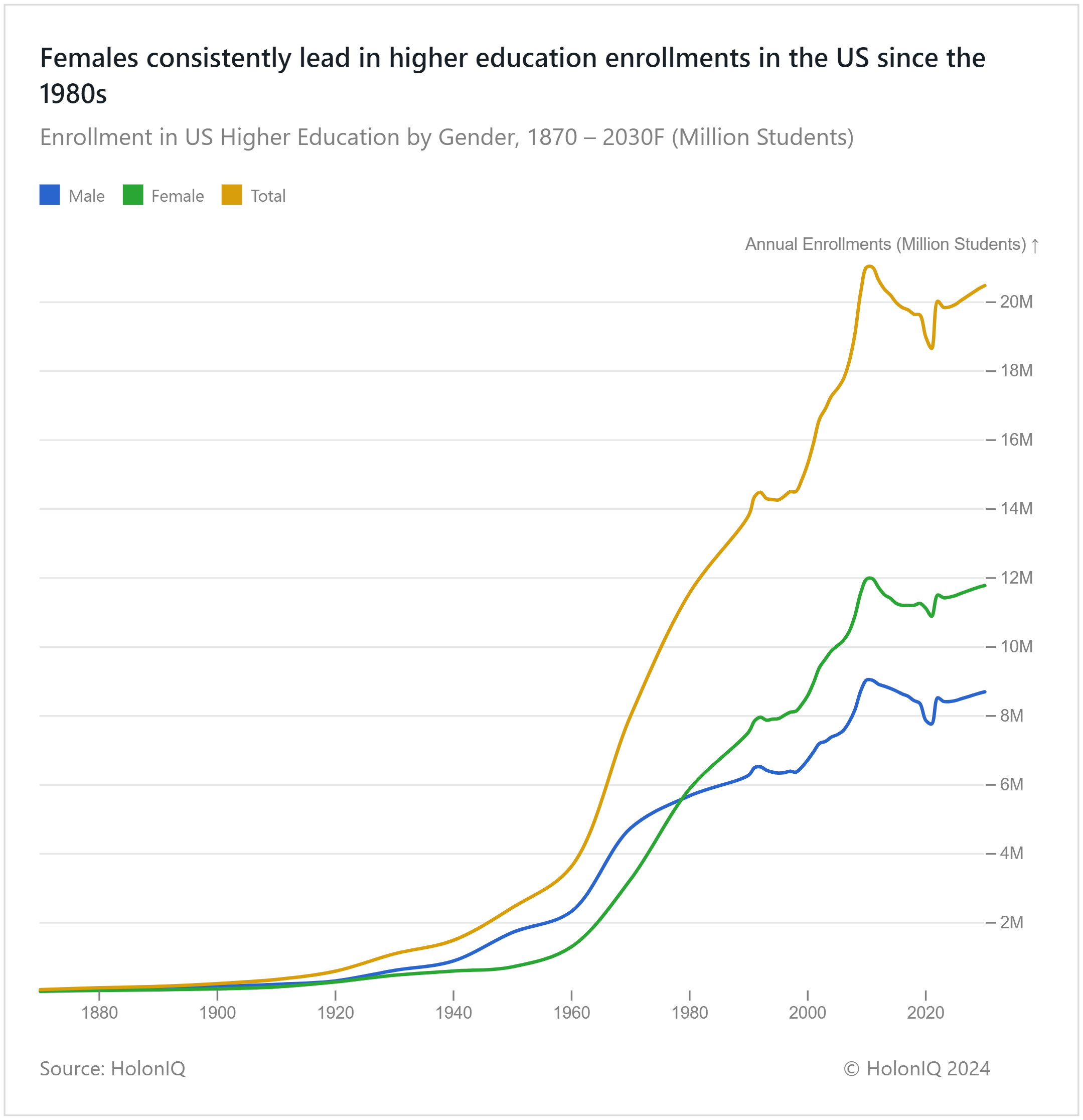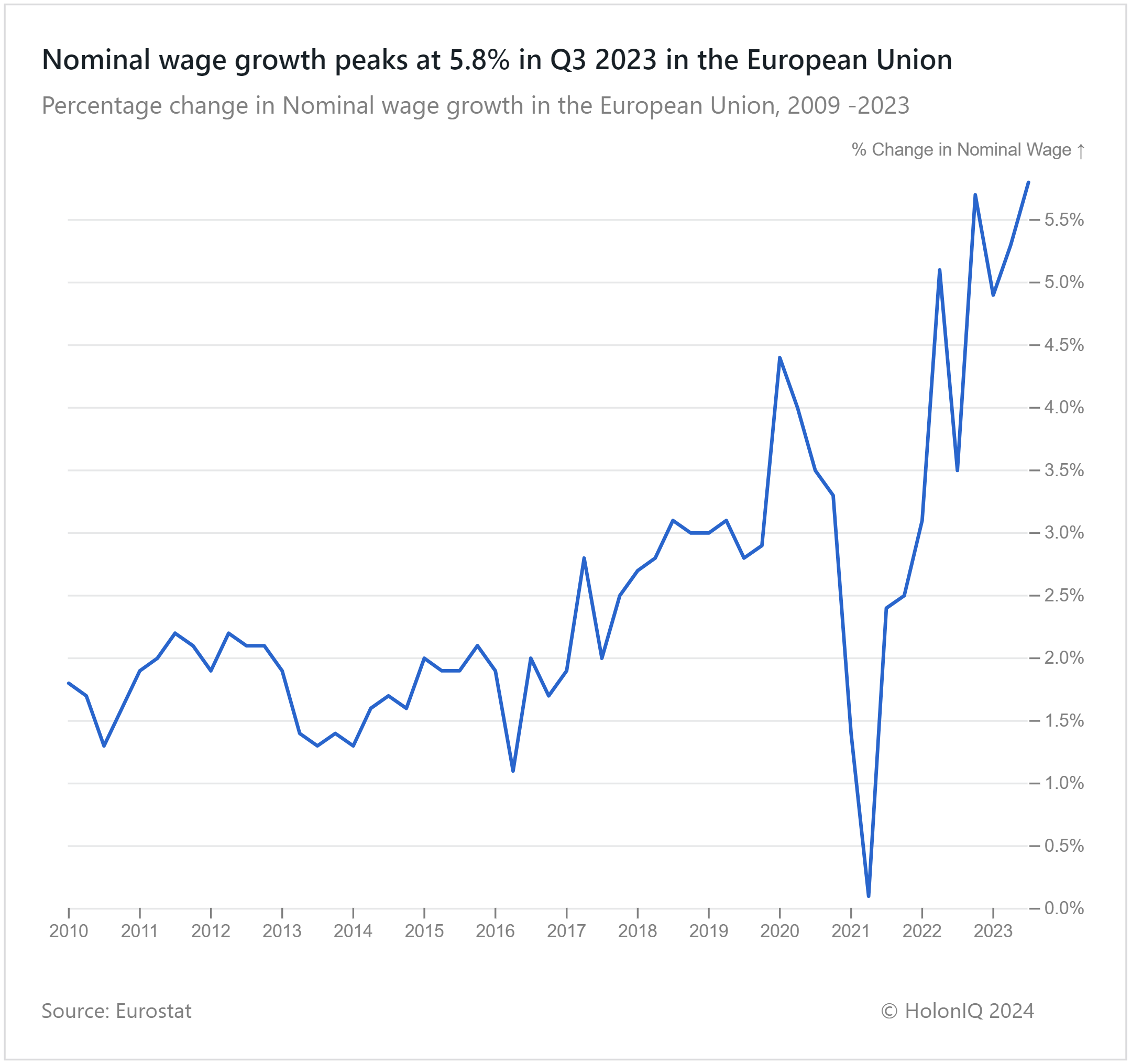🌊 67% Freshwater Loss. 3M+ Female Enrollment. Wage Growth.
Chart of the Day #30 looks at Freshwater Resources, Education Enrollments, and Wage Growth in the EU.
Olá 👋
Water stress is becoming an increasingly challenging issue, especially for the Gulf Cooperation Council countries, with four of six most water-scarce countries in the world coming from the GCC group.
Today's Topics
- 🌊 Freshwater Resources. 67% Drop in Freshwater Resources in Latin America
- 🎓 Education Enrollments. 3M More Women Enrolled in Higher Education
- 💸 Wage Growth. Nominal Wage Growth Peaks at 5.8%
For unlimited access to over one million charts, request a demo.
🌊 67% Drop in Freshwater Resources in Latin America

Global freshwater resources have witnessed a decline driven by evolving environmental changes, global warming, and population increases. It is projected that global freshwater demand is set to overtake supply by 40% by 2030. Latin America and the Caribbean stand out as the region experiencing the largest decline, with per capita freshwater resources deteriorating by 67%. Mining, agriculture, deforestation, and decreased rainfall contribute significantly to this decline. Sub-Saharan Africa also faces a noticeable decline in freshwater resources. Naturally characterized by a dry climate, this region is gaining global importance for its large critical mineral deposits, making it a hub for mining that would lead to additional water stress, similar to Latin America.
🎓 3M More Women Enrolled in Higher Education

In the United States, total annual enrollments in education have shown a significant increase, growing from negligible levels in the 1800s to more than 20 million by 2030. Notably, women have maintained a lead in enrollments for over four decades, with approximately 3 million more women in higher education.
It is notable that women only took the lead in the 1980’s. The second-wave feminist movement, which gained traction in the 1960s and '70s, sought equal rights for women, adding pressure on universities to admit women. Many Ivy League schools only became coed institutions during this time. At the same time, the movement encouraged women to pursue higher education and achieve financial independence. In the 1980s, women took the lead, making up a larger percentage of the cohort at higher education institutions, a position they continue to hold today.
💰 Nominal Wage Growth Peaks at 5.8%

The first quarter of 2021 shows that nominal wage growth in the EU experienced a significant downturn, falling to 0.1%. This decline was attributed to the adverse impact of the global pandemic. However, as the world emerged from the pandemic's effects, by the third quarter of 2023, the nominal wage growth had surged to a peak of 5.8%, showing confidence in continued wage growth.
The increase in wage growth may provide a much-needed boost to the economic recovery in Europe. However, combined with some tightness in the labor markets, it could lead to inflationary pressure if companies pass on their higher wage costs to consumers.
Like getting this newsletter? For unlimited access to over one million charts, request a demo.
Thank you for reading. Have a great week ahead!
Have some feedback or want to sponsor this newsletter? Let us know at hello@holoniq.com
